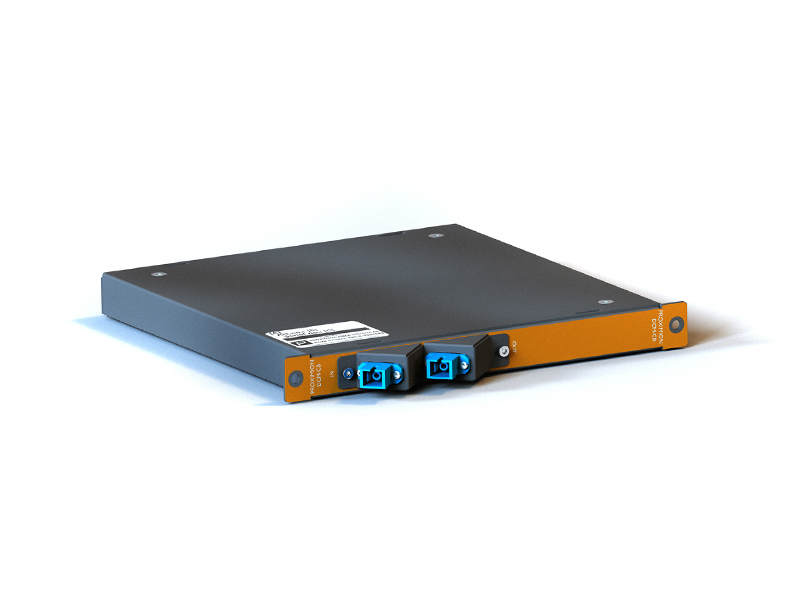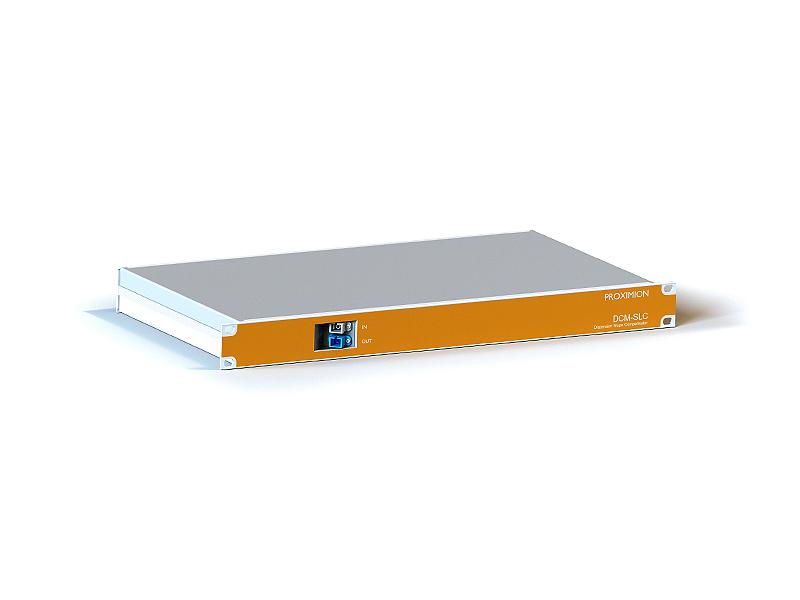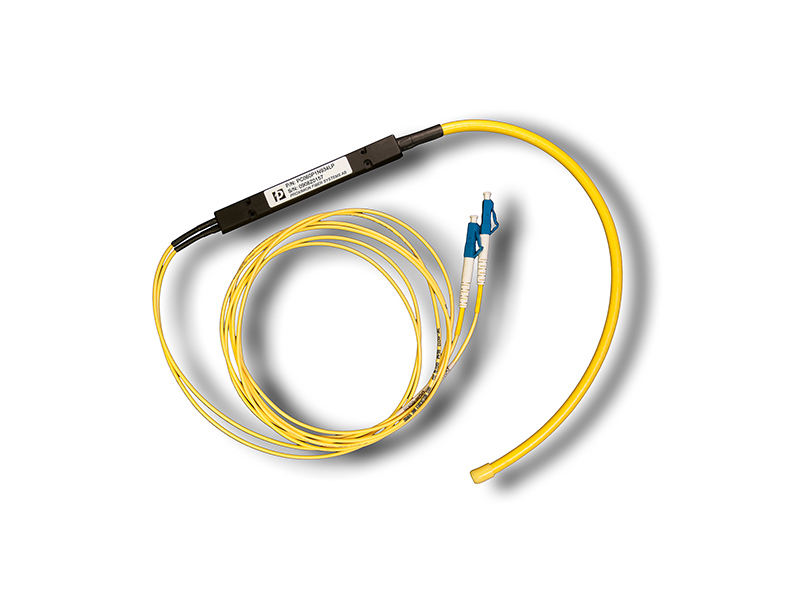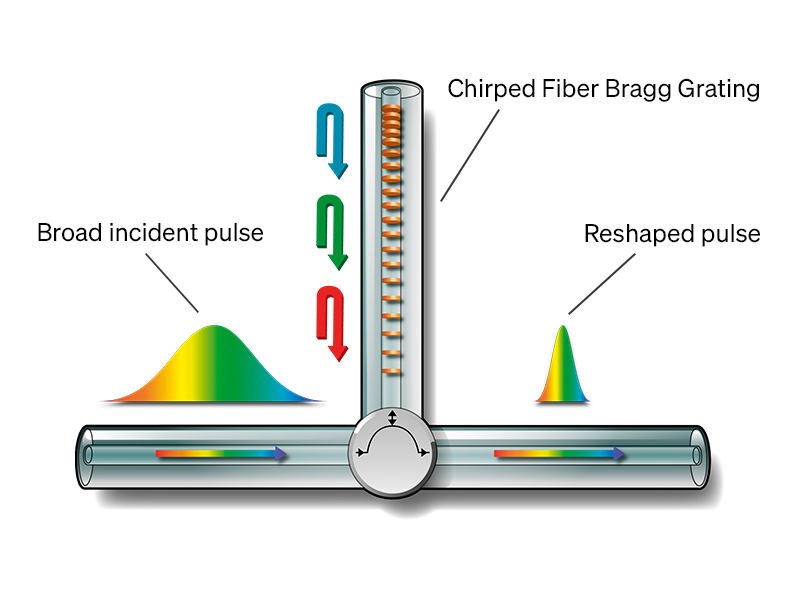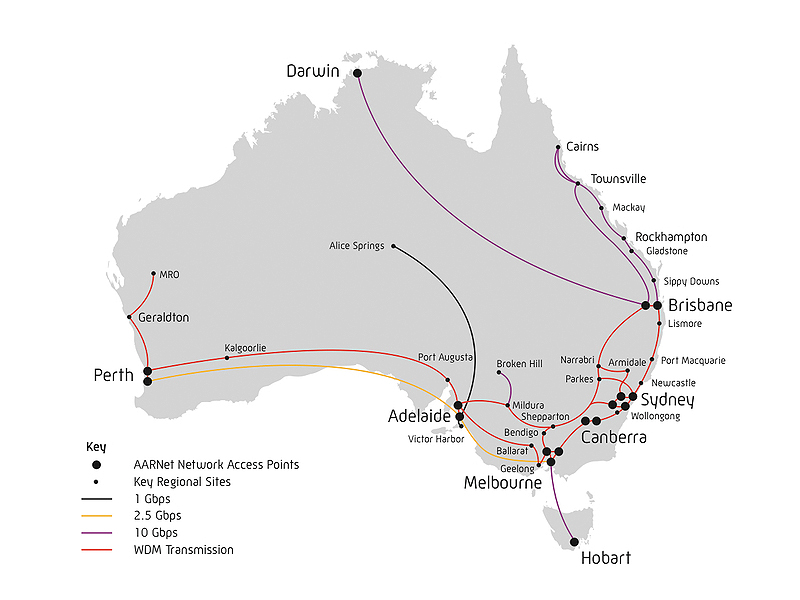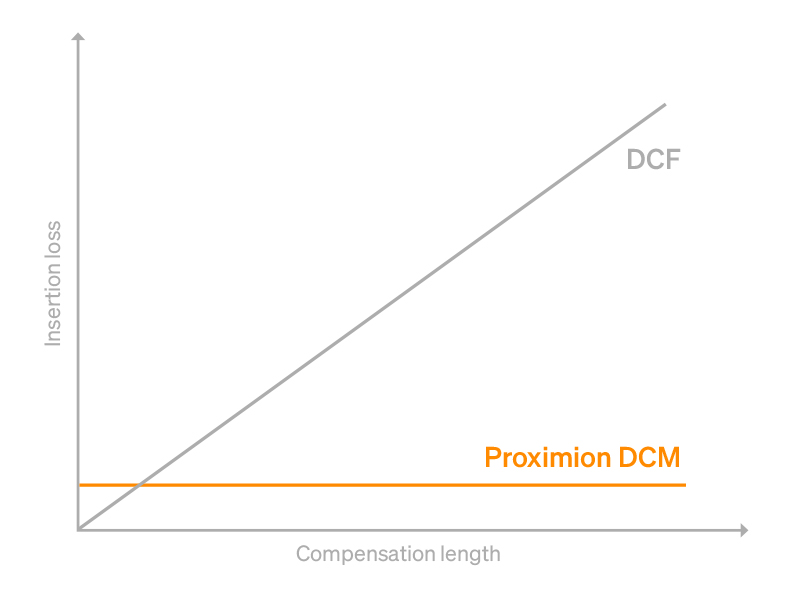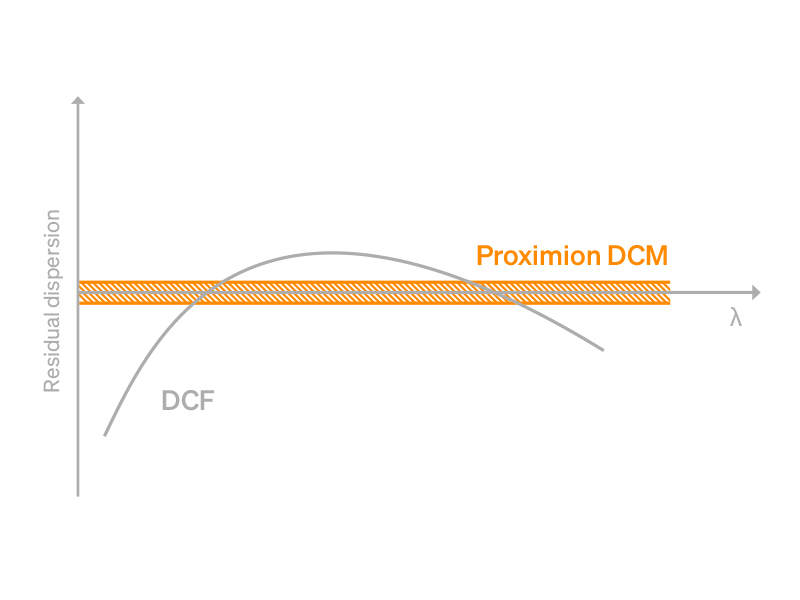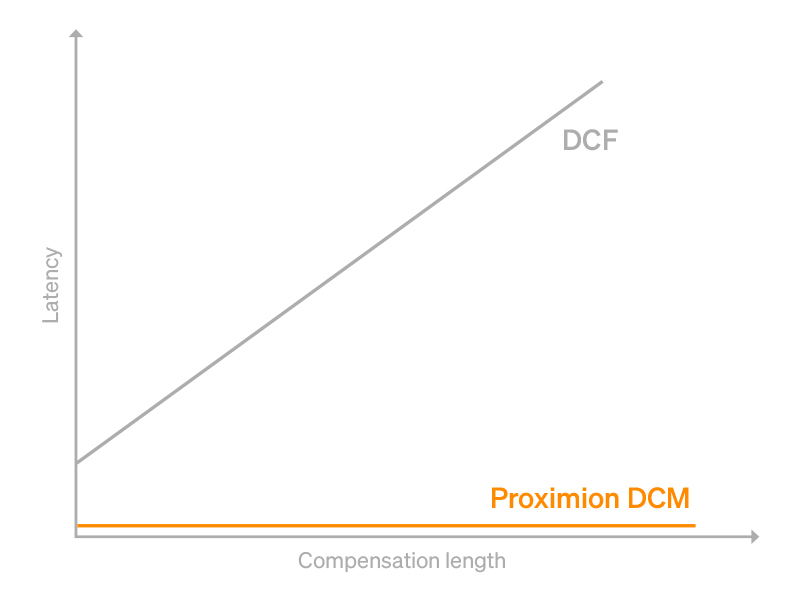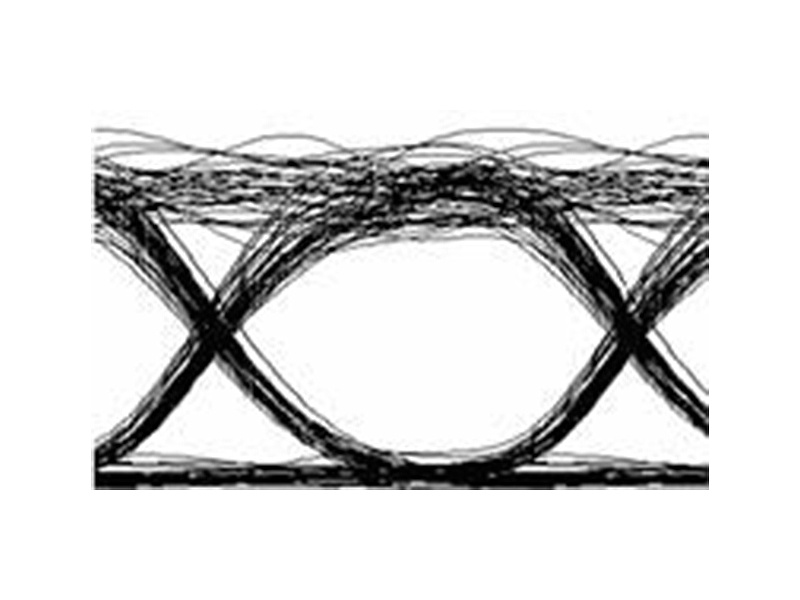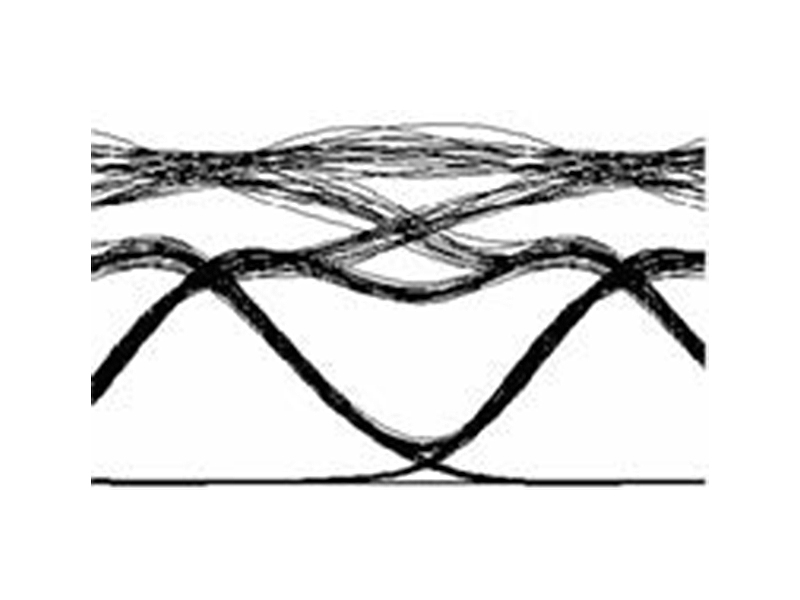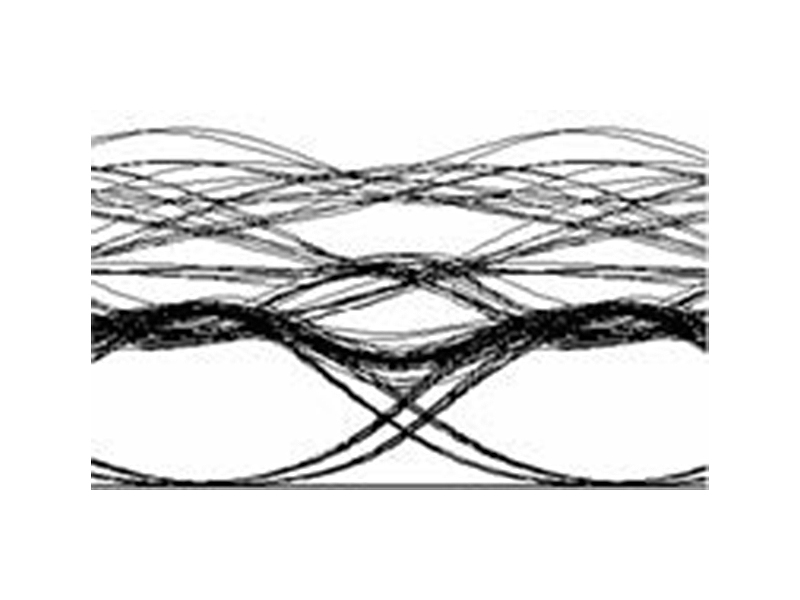Choose Your DCM

DCM type
Wavelength range *
Usable bandwidth
Dispersion slope matching
Compensation length
Insertion loss
Latency
Dimension
Non-linearities
*on a best efforts bases outside of 1525 - 1606 nm
CB
990 - 1700 nm
OWR
G.652, G.655 or Custom
10-140km G.652 40-480km G.655
3.7dB
<150ns
198x212x223mm
None
HDC
990 - 1700 nm
850GHz, 450GHz, Custom
Custom
Custom ≈600km G.652
3.7dB
<100ns
198x212x223mm
None
SLC
990 - 1700 nm
Custom
Custom
Custom
7.0dB
<180ns
447x246x44mm
None
PC
990 - 1700 nm
60GHz, 760GHz, Custom
G.652, G.655 or Custom
6-80km G.652
25-350km G.655
2.5dB
<25ns
12x110x11mm
None

